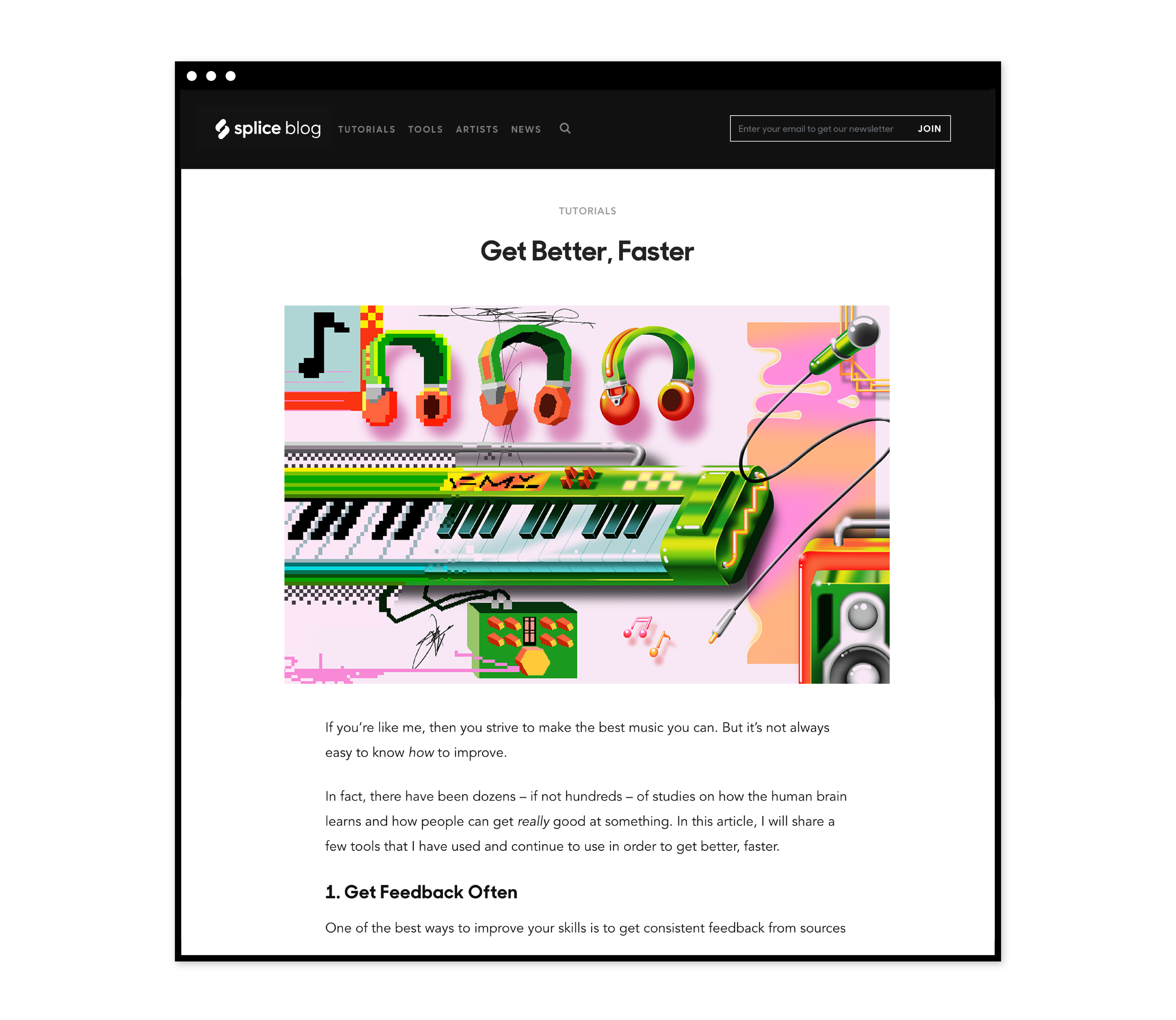Launched in 2013, Splice quickly became a robust resource for musicians — a place to rent-to-own plugins, access samples, collaborate securely, and participate in a larger global community of sound. By simplifying the tedious process of working with music software, Splice empowers musicians and producers to hone their craft, develop their creative process, and release more amazing music.
After years of exponential growth, Splice soon found that its image and values were misaligned with the diversity of creativity that it enabled. As part of an initial core brand team, I was tasked with reshaping Splice's brand from end-to-end.
We worked closely with an external agency, R/GA London, on the initial mark and overall strategy. The remaining brand assets and rollout were then developed in-house, alongside additional collaborations with OMSE on a custom typeface and Heather Sten on photography.
As a design lead, I was responsible for shaping the primary visual language, photography & illustration direction, color palette, and overall system behind editorial content, campaigns, and social channels. I was also a crucial contributor to the entire visual direction of the mark, typeface, voice & tone, and brand strategy.
Additionally, I lead an overhaul of art direction for Splice’s education content, of which you can access a case study here.














